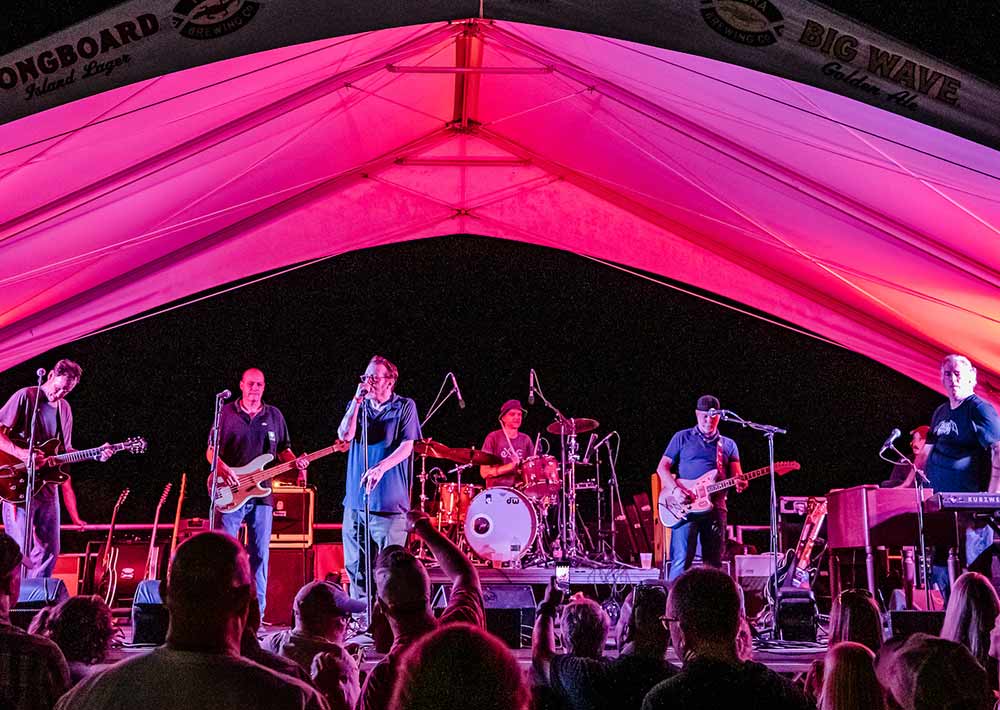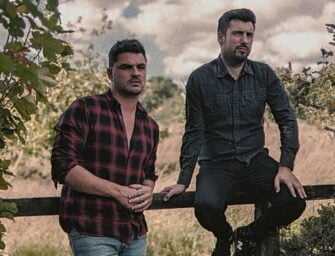
The Connells. Mike Connell: “I had no inkling that the song would connect the way that it has”
Mike Connell on the radio hit that broke his band across Europe, dominating both charts and airwaves along the way
Formed in Raleigh, North Carolina, alt-rock band The Connells released their debut album, Darker Days, in 1986. The albums Boylan Heights, Fun & Games, and One Simple Word followed, with singles such as Something To Say, Stone Cold Yesterday and Get A Gun gaining traction on college radio. Armed with Big Star’s ability to power up pop music and a love for harmonies, their mainstream break came with fifth album Ring in 1993 – recorded in Bearsville Studios, Woodstock, with producer Lou Giordano. That album increased the size of their audience and allowed them to keep on making the music they wanted to.
Now, Ring is being reissued to mark its 30th anniversary. As well as its first widely-available vinyl release, there are bonus-filled CD and Digital Deluxe editions that include bonus tracks, B-sides and demos. Much of the album’s eventual success was due to the popularity of the song ’74-’75. Poignant, catchy, and less abrasive than the grunge sound of the era, it was a radio and music television favourite that steadily grew in popularity, peaking in 1995 when it reached the Top 10 in 11 different European countries, No 1 in Norway and Sweden.
Here frontman and songwriter Mike Connell reflects on the creation and success of this wistful classic…
This was pretty much just another failed relationship song

Released: 1993
Artist: The Connells
Label: Alternation
Songwriters: Mike Connell
Producers: The Connells, Lou Giordano
UK chart position: 14
US chart position: –
“With the majority of tunes that I have written, I don’t have a clear recollection of when and where a song – or what became a song – “happened,” but I do have a pretty good recollection from that morning in early 1991, when I happened to land on an A minor chord, followed in turn by the signature single note line that introduces ‘74-’75, and which follows that Am to C to G to Am chord progression.
“I repeated that part – that line and that chord progression – and after getting that down on tape, it was just a question of where to go from there. So, after a few starts-and-stops and wrong turns, I settled on the verse chord progression. With respect to what became the chorus, I recall that the words, or the numbers, “74-75” pretty much came to mind simultaneously with the melody for those eight notes. What I do not remember is whether the verse melody started to occur to me right away, or whether that “presented itself” more gradually and only later.
“I can’t say that there is one thing that inspired the song’s creation. With respect to the tune itself, I simply drew on everything that I had ever listened to and loved – from The Byrds to The Beatles to Bob Dylan to Big Star to The Lovin’ Spoonful, and on to The Clash, Echo & The Bunnymen, R.E.M. (from just down the road), The Replacements, Teenage Fanclub and The La’s – all of whom wrote these really amazing melodies and lyrics. That was pretty much my hope for any song – to try to come up with a melody that would get into your head and refuse to go away.

The Connells. Mike Connell: “That was pretty much my hope for any song – to try to come up with a melody that would get into your head and refuse to go away.”
“With respect to the lyrics, that part of songwriting always felt like a chore and a struggle – and that was no different with ‘74-’75. Anyway, this was pretty much just another failed relationship song, and I used the numbers 74 and 75 to try to convey the idea that things had gone from point A to point B, such that a line had been crossed and there was no going back to point A. So, it was the sequence of those numbers, plus the fact that they fit the melody and sang pretty easily.
“The cynical answer [to why it was written] is that it was written because I was the principal songwriter in a recording band with obligations to our record company and to one another and I knew that the only way to keep the thing going was to come up with new material. To our record company’s credit, I don’t recall that they ever leaned on us to “write a particular type of song.” And at the height of the grunge era, 1993, they sure as hell would not have suggested that we come up with an acoustic-based, mid-tempo snoozer, as I like to refer to ’74-’75.
“Like I indicated before, it was that single-note part and the Am to C to G back to Am chord progression in the intro that was the springboard for the rest of the song. Don’t recall the verse coming together, but I do recall that the chorus melody and the words/numbers 74 and 75 occurred to me in that initial sitting.
“Thankfully, the better part of the song – including the idea of the chorus – happened pretty spontaneously and effortlessly. But, I think it was a matter of weeks, if not months, before everything was completed. Lyrics were always a struggle.
“It was written on a Guild acoustic guitar, but ultimately recorded with a Gibson Chet Atkins. I really can’t remember what the rest of the guys were playing all those years ago, when they came up with their arrangements.
“I had no inkling that the song would connect the way that it has. Obviously, there’s an extraordinary amount of luck involved and a lot of people helping us out – including our sound man, Tim Harper, who had a lot to do with the song’s ultimate arrangement; the band’s old friend, Mark Pellington, who heard an advance copy of the song and asked to be able to make a video for it; and then, a couple of A&R guys at Intercord Records in Germany who approached TVT for permission to licence Ring for release in Germany, where it first connected.
“It clocked in as the third tune, behind two songs that were more “typical” for us – meaning more driving and electric-based. But, even though it was slower in tempo than most of the rest of the songs on Ring, it didn’t necessarily interrupt the flow of the record.
“More than anything, I just feel incredibly fortunate that the song has gotten the attention that it has gotten. It’s very humbling and still to this day, a real head-scratcher. When we play it live these days, we try to stay true to the original recorded version.”








![Songwriting Credits… best new music playlist [September 2023]](https://www.songwritingmagazine.co.uk/wp-content/uploads/songwriting-credits-september-2023-335x256.jpg)






























Related Articles